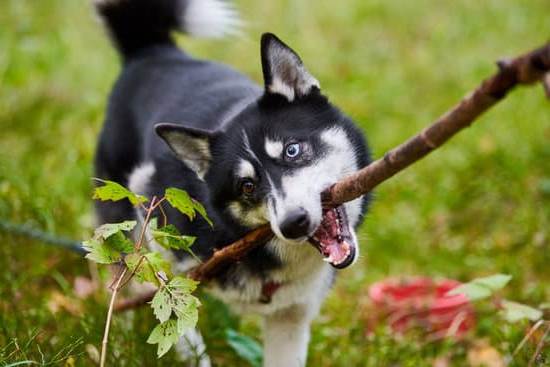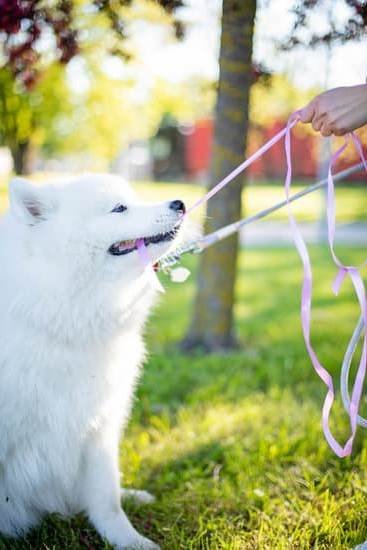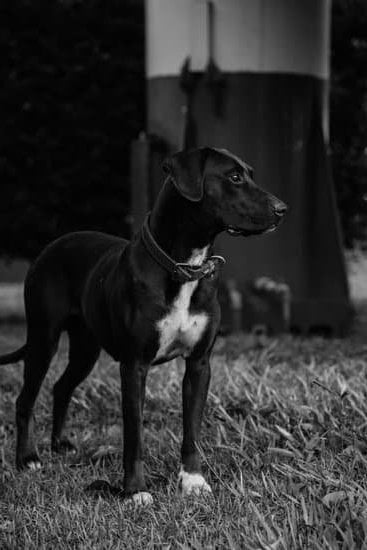How long should it take a dog to potty train? Potty training your furry friend can be a challenging and frustrating process, but it is an essential part of ensuring a happy and healthy relationship with your pet. In this article, we will explore the potty training process for dogs, including the factors that can affect the duration of training, different methods of potty training, and how to set realistic expectations.
Potty training duration can vary depending on several factors, such as the breed of the dog, their age, and individual temperament. Understanding these factors can help you determine how long it should take to successfully potty train your dog.
In addition to understanding these factors, it is crucial to establish a routine and remain consistent throughout the training process. This includes recognizing the signs that your dog is ready to be potty trained and avoiding common mistakes that can hinder progress. By following these guidelines, you can set yourself and your pet up for success in the potty training journey.
Factors Affecting the Duration of Potty Training
When it comes to potty training your dog, there are several factors that can affect the duration of the process. Understanding these factors can help you set realistic expectations and develop an effective training plan. Here are some of the key factors that can influence how long it takes to potty train a dog:
- Age: The age at which you start potty training your dog can have a significant impact on how long it takes for them to learn. Puppies have a limited bladder capacity and may need more frequent trips outside, while older dogs may already have established habits that need to be changed.
- Breed: Different dog breeds have different temperaments and learning abilities, which can affect their potty training progress. Some breeds may pick up on training quickly, while others may require more patience and consistency.
- Health issues: If your dog has any underlying health issues that affect their bladder control, it may take longer to successfully potty train them. It’s important to address any health concerns with your veterinarian before starting the training process.
In addition to these factors, the method you choose for potty training and your consistency in following through with the training plan can also play a significant role in how long it takes for your dog to become fully potty trained. Understanding these factors can help you better navigate the potty training process with your furry friend.
Different Methods of Potty Training
Crate Training
One of the most popular methods of potty training a dog is through crate training. This method involves confining your dog to a crate or small, enclosed space when they are not being directly supervised. Dogs naturally avoid soiling their sleeping areas, so this method encourages them to “hold it” until they are taken outside. It is important to gradually increase the amount of time your dog spends in the crate to avoid any negative associations with confinement.
Paper Training
Paper training is another method that works well for some dogs, particularly those living in high-rise apartments or urban areas where getting outside frequently may be difficult. This method involves teaching your dog to eliminate on a specific type of material, often newspaper or pee pads, placed in a designated area indoors. Over time, the material is moved closer and closer to the door until it is eventually placed outside.
Bell Training
Bell training involves teaching your dog to ring a bell whenever they need to go outside. This can be done by hanging a bell from the doorknob and encouraging your dog to touch it with their nose or paw before taking them out for potty breaks. With consistent reinforcement, many dogs quickly learn to associate ringing the bell with going outside to do their business.
By understanding and utilizing these different methods of potty training, you can find the approach that best suits your dog’s needs and your lifestyle. Each dog is different, so it may take some trial and error before finding the most effective method for successful potty training.
Setting Realistic Expectations
When it comes to potty training your dog, it’s important to set realistic expectations. Every dog is unique, and the duration of potty training can vary depending on several factors. The breed, age, and individual personality of your dog all play a role in how long it will take for them to be fully potty trained. Additionally, the consistency and method of training also contribute to the timeline for potty training.
It’s essential to understand that accidents will happen during the potty training process. Setting realistic expectations means being prepared for setbacks and not getting discouraged when they occur. Some dogs may pick up on potty training quickly, while others may need more time to grasp the concept. By acknowledging these possibilities from the beginning, you can approach the training process with patience and understanding.
One way to set realistic expectations is by educating yourself about the typical timeline for potty training a dog. While some dogs may become fully potty trained within a few weeks, others may take several months. By being aware of these potential timelines, you can avoid feeling frustrated if your dog doesn’t progress as quickly as you had hoped. Remember that each dog is different, and comparing their progress to other dogs’ experiences may lead to unnecessary stress.
Consistency Is Key
When it comes to potty training your dog, establishing a routine is crucial for success. Dogs thrive on consistency and routine, so setting a schedule for potty breaks can help them understand when and where they are supposed to do their business. Here are some tips for establishing a consistent routine for your dog’s potty training:
- Set specific times for potty breaks: Take your dog outside first thing in the morning, after meals, before bedtime, and every few hours throughout the day.
- Choose a designated potty area: Selecting a specific spot in your yard or outdoor area will help your dog associate that place with going to the bathroom.
- Use verbal cues: When taking your dog outside, use a specific command or cue such as “go potty” to let them know what is expected of them.
By consistently following a routine, you are helping your dog develop good habits and understand where and when they should eliminate. Keep in mind that accidents may happen, especially during the early stages of training. However, sticking to a consistent routine will help minimize these incidents and accelerate the potty training process.
Remember that every dog is different, so it’s important to be patient and stay committed to the established routine. With time and consistency, your furry companion will eventually learn where they should go potty and become fully potty trained.
Signs That Your Dog Is Ready to Be Potty Trained
Before starting the potty training process with your dog, it is important to recognize the signs that indicate they are ready to be trained. One of the most significant signs is when your dog starts to show control over their bladder and bowel movements. If you notice that your dog can hold their urine for longer periods or shows discomfort when they need to eliminate, it may be a sign that they are ready to be potty trained.
Another indicator that your dog is ready for potty training is when they exhibit certain behavior before eliminating. This includes sniffing around, circling a specific area, or suddenly disappearing from sight. By recognizing these pre-elimination behaviors, you can anticipate when your dog needs to go outside to relieve themselves.
Additionally, if your dog begins to understand simple commands and has developed a bond with you, it may also be a good opportunity to start potty training. A strong relationship between you and your dog will make the training process smoother as they will be more inclined to please you and follow your instructions.
It’s important not to rush the potty training process if your dog does not display these signs yet. Patience and understanding are key in ensuring successful potty training for your furry friend.
| Signs of Readiness | Description |
|---|---|
| Control over bladder and bowel movements | Dogs showing the ability to hold urine for extended periods or displaying discomfort when needing to eliminate |
| Pre-elimination behaviors | Observable cues such as sniffing around, circling, or disappearing from sight before going potty |
| Bond and obedience | A strong relationship with the owner and understanding of basic commands indicate readiness for training |
Common Potty Training Mistakes to Avoid
Potty training a dog can be a challenging process, and there are several common mistakes that owners should be aware of in order to ensure successful potty training. One of the most common mistakes is punishing the dog for accidents. It’s important to remember that accidents are part of the learning process, and punishment can create fear or anxiety in the dog, making it even more difficult for them to learn.
Another mistake to avoid is not being consistent with the potty training routine. Consistency is key when it comes to potty training, and any changes in routine can confuse the dog and make it harder for them to understand where they are supposed to go potty.
Additionally, using the wrong cleaning products to clean up accidents can also be a mistake. Dogs have a strong sense of smell, and if their accident spots aren’t properly cleaned with enzymatic cleaners, they may continue soiling those areas.
It’s also important to avoid waiting too long before starting the potty training process. Some owners wait until their dogs are older to start potty training, thinking that they will be easier to train at that point.
However, starting early is actually more beneficial as puppies have an instinctual desire to keep their living space clean. By starting early, owners can take advantage of this natural instinct and make the potty training process easier for both themselves and their pets.
| Common Potty Training Mistakes | Impact |
|---|---|
| Punishing the dog for accidents | Creates fear or anxiety; makes it harder for them to learn |
| Not being consistent with the potty training routine | Confuses the dog; makes it harder for them to understand where they should go potty |
| Using wrong cleaning products for accidents | Dogs may continue soiling those areas if not properly cleaned with enzymatic cleaners |
How Long Should It Take a Dog to Potty Train?
Finding the Right Timeline
The duration of potty training for dogs can vary depending on several factors. Some dogs may be quick to catch on and fully potty trained within a few weeks, while others may take several months to master the process. It’s important for dog owners to understand that each dog is unique and their individual background, age, breed, and health can all play a role in how long it takes for them to become fully potty trained.
Puppy Potty Training Timeline
Puppies typically have smaller bladders and less control over their bodily functions compared to adult dogs. As a result, potty training a puppy may take longer than potty training an adult dog. On average, it can take anywhere from 4 to 6 months for a puppy to be fully potty trained, but this timeline can vary widely. Consistent training, positive reinforcement, and patience are key components in successfully potty training a puppy.
Adult Dog Potty Training Timeline
In general, adult dogs may have more bladder control and a better understanding of basic commands compared to puppies. However, if an adult dog has not been previously or properly potty trained, the process can still take time.
Depending on the individual dog’s habits and previous living conditions, it may take anywhere from a few weeks to several months for an adult dog to become reliably potty trained. Understanding the signals of readiness from the dog and maintaining consistency in training are crucial factors in determining how long it will take an adult dog to be fully potty trained.
Conclusion
In conclusion, potty training a dog can be a challenging but ultimately rewarding experience for both the pet and their owner. It is important to remember that every dog is different and may require varying lengths of time to become fully potty trained. However, by understanding the factors that can affect the duration of potty training, utilizing different methods, setting realistic expectations, and maintaining consistency in establishing a routine, success can be achieved.
As a dog owner, it is crucial to celebrate the small victories along the way. Whether it’s your dog signaling that they need to go outside or having fewer accidents in the house, each step towards successful potty training should be acknowledged and rewarded. Positive reinforcement will encourage your furry friend to continue exhibiting good potty behavior.
It’s also important to understand that setbacks may occur during the process of potty training. If issues arise, it’s essential not to get discouraged but instead troubleshoot any problems that may be contributing to the setbacks.
Consulting with a professional dog trainer or behaviorist can provide valuable guidance and support in tackling any challenges that may arise during the potty training process. With patience, persistence, and positivity, potty training can be successfully accomplished, leading to a happier and healthier relationship between you and your beloved canine companion.
Frequently Asked Questions
How Long Does Potty Training a Dog Take?
The length of time it takes to potty train a dog can vary depending on the individual dog and the consistency of training. On average, it can take anywhere from a few weeks to several months for a dog to be fully potty trained. It’s important to be patient, consistent, and positive during the process.
How Do You Potty Train a Dog Fast?
Potty training a dog fast requires a structured routine, frequent potty breaks, positive reinforcement, and supervision. By taking your dog outside regularly, praising them when they eliminate in the desired spot, and closely monitoring them indoors, you can help speed up the potty training process. Additionally, using crate training or confinement when unsupervised can also aid in fast potty training.
At What Age Are Dogs Easiest to Potty Train?
Dogs are easiest to potty train between the ages of 12 weeks and six months. At this stage, they are more receptive to learning and establishing routines.
However, each dog is different, so some may catch on quickly at an even younger age while others may take longer to grasp the concept of potty training. Regardless of age, patience and consistency are key when teaching a dog where and when to go potty.

Welcome to the blog! I am a professional dog trainer and have been working with dogs for many years. In this blog, I will be discussing various topics related to dog training, including tips, tricks, and advice. I hope you find this information helpful and informative. Thanks for reading!





